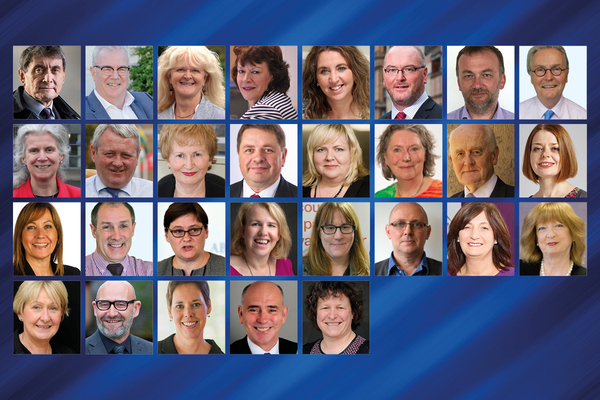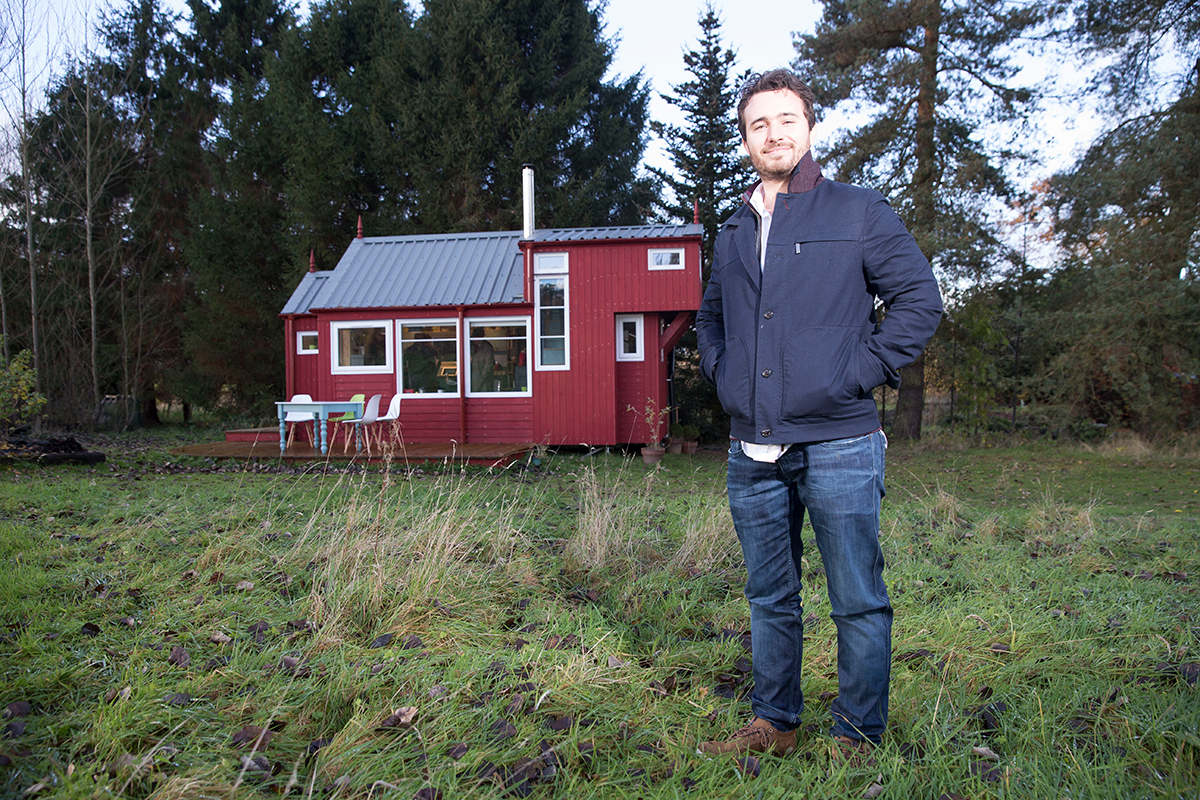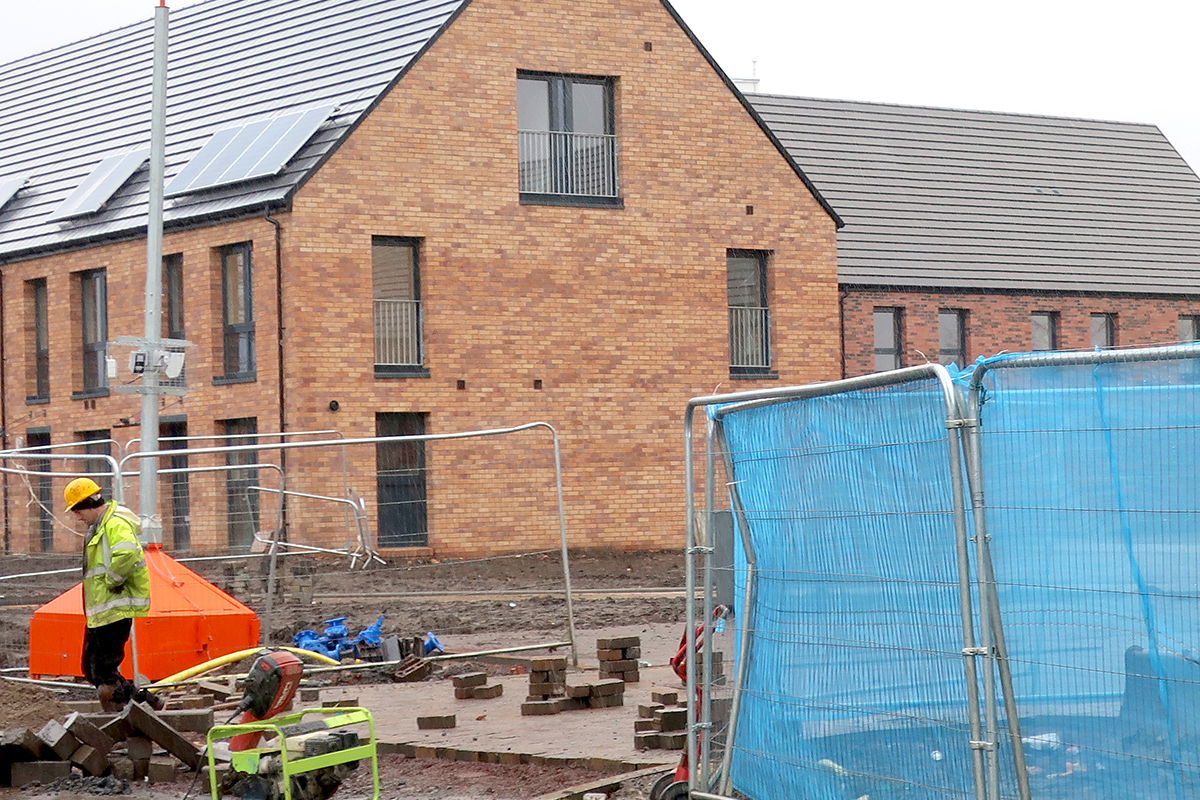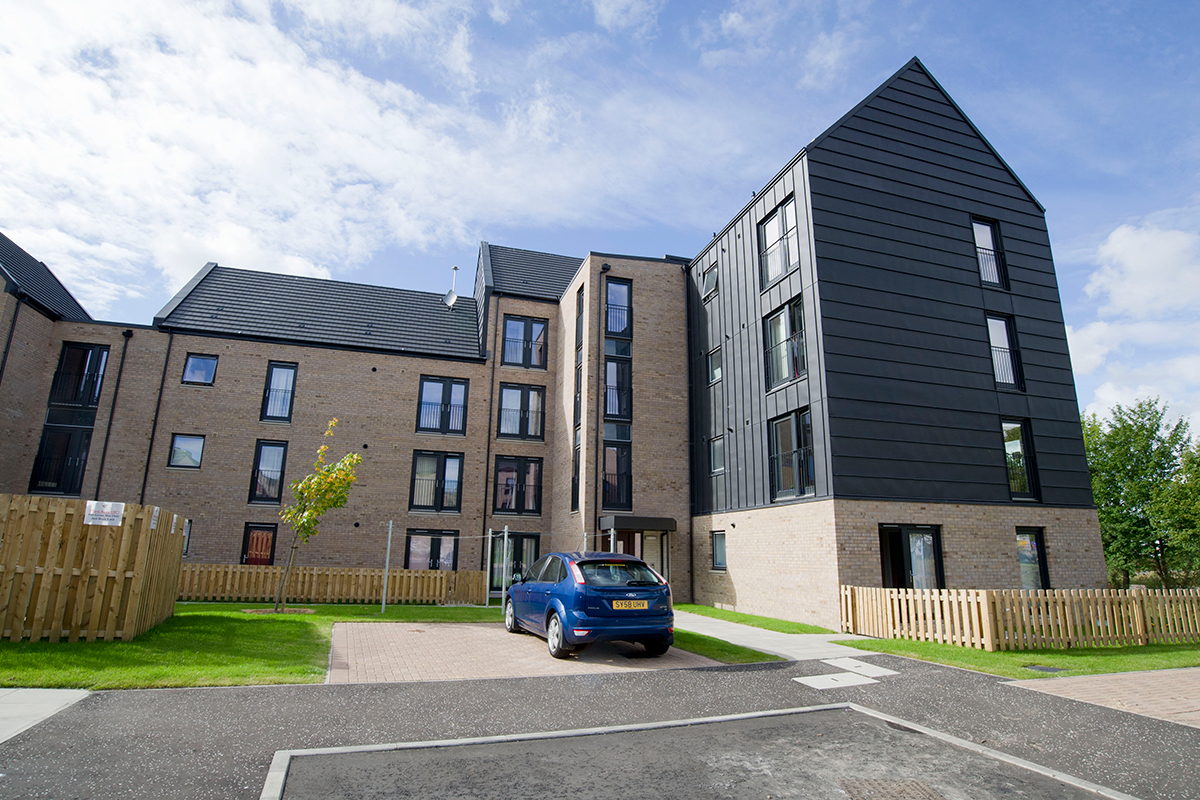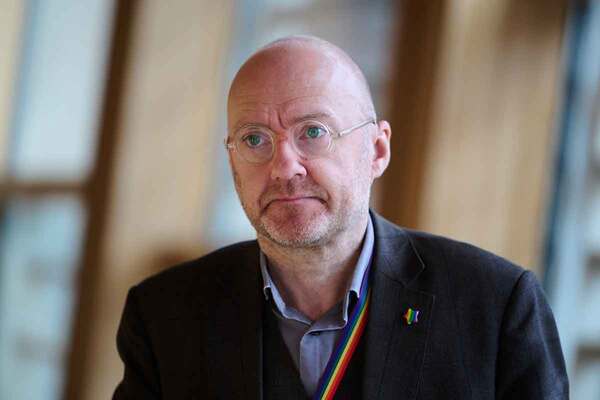You are viewing 1 of your 1 free articles
Is Scotland building enough homes?
The Scottish Government has set an ambitious target to deliver 50,000 affordable homes by 2021. Critics claim it is impossible to meet, but Michael Lloyd finds social landlords are confident
New housing under construction in the Pennywell district of Edinburgh
The gritty Edinburgh districts of Muirhouse and Pennywell have a reputation to live down. They provided Irvine Welsh, who grew up here, with material for his Trainspotting and other urban dystopian novels.
But the housing under construction here now is a far cry from the shoddy, draughty, leak-streaked 1960s blocks that Mr Welsh knew as a youngster.
Smart private homes are selling fast, and the identical social rent houses alongside are bright, energy-efficient, double-glazed units with plenty of space for families.
The development is being built under the Scottish Government’s Affordable Housing Supply Programme.
In late 2015, the Scottish National Party government set out plans to deliver 35,000 homes for social rent, and 15,000 in other affordable tenures (such as mid-market rent and shared equity purchase) by the end of the current parliamentary term, in 2021 (see box: Financing affordable housing).
But figures showing annual housing association completions were down by 12% – from 2,803 to 2,464 – in the year to June 2017 have been seized on by political opponents as evidence the plans are failing. (The Scottish Government responds that what counts is social housing starts and these were up by 32% – from 4,714 to 6,234. It says it will take time for the affordable housing programme to ramp up.)
It isn’t only politicians who are sceptical, though. Michael Williams, relationship manager at specialists Procurement for Housing, thinks there is a serious risk that shortages of skilled labour, suitable land and finance may prevent the Scottish Government from hitting its target.
“I think it will struggle. The easy and most profitable sites for development have already been used up,” he argues.
“Brexit is a problem as well. Lots of excellent workers have come in from Europe to carry out the work. If we are making it difficult for them to come here then we will lose that.”
But does the target look achievable to those working at site level? Scottish housing associations and local authorities admit there are issues, but seem confident these can be overcome.
Councils have a major role in the delivery of the promised homes.
Gavin Barrie, convener of the Housing and Economy Committee at City of Edinburgh Council, explains that the city intends to build 10,000 affordable homes over the next five years, and 20,000 over the next decade. At least 25% of the 20,000 will be for social rent, he says.
Mr Barrie places good relationships with housing partners at the core of his council’s strategy. “These are joint ventures with the development community and housing associations, and everybody brings something positive to the table,” he says.
To find out how this works in practice, Inside Housing visited Edinburgh’s £42m Pennywell development (pictured), where builder Urban Union is working with the council to deliver 409 homes for market sale, 142 at mid-market rent and 222 at social rent.
It’s an attractive mix of town house-style blocks and higher flats.
The quality of the construction is evident in the fit and finish inside and out.
There’s no sign of the dour beige brickwork or fake stone that can characterise Scottish social housing.
New housing under construction in the Pennywell district of Edinburgh
Co-operation isn’t only at the strategic and development level. The council’s project manager at Pennywell, Rachel Fraser, is enthusiastic about the partnership. “It is resourced well for all the trades so it is not a case of [the builders] saying we need to prioritise these tradesmen because this is for the private houses,” she explains.
There are many other Edinburgh schemes ongoing or in the pipeline. Elaine Scott, housing services manager at the council, says some 2,000 homes are under construction. “We’ve got the land supply and investment between the council and housing associations for around 8,000 homes, but it is dependent on bringing in some more grant funding to support social rented housing.”
Whereas English councils are only recently restarting their council housing programmes, Scottish local authorities are confident developers, as well as strategic enablers. But their efforts are still exceeded by housing associations, which build twice as many. In the year to June 2017, housing associations completed 2,464 homes. Local authorities built 1,244.
“Many associations either disbanded their development teams or consolidated development and asset management," David Fletcher, Wheatley Group
Two of the biggest housing associations developing in Scotland are Edinburgh-based – 11,280-home Link and 79,000-home Wheatley Group – which encompasses many organisations, including Glasgow Housing Association (GHA).
Like City of Edinburgh Council, the associations are ramping up their development programme. Link responded to the Scottish Government’s target by boosting its own ambitions from a goal of 1,800 homes in five years, to 3,200 homes. Of these, 70% will be for social rent. Colin Culross, director of development at Link, admits suitable sites are becoming harder to find, since exhausting a “windfall” from the recession that followed the 2008 financial crash.
“We were able to pick up on some sites and some opportunities that might not have come our way, had the economic situation been stronger for private developers,” Mr Culross says. “Those opportunities are not now readily available, but what has come out of it is better relationships with the private sector. We’re now a known commodity to the development community.”
David Fletcher, director of regeneration at Wheatley Group, admits the sector is potentially facing a skills gap, with experienced staff lost during the recession. “Many associations either disbanded their development teams or consolidated development and asset management, meaning a lot of experienced staff left the sector.” So far though, this has not been a major problem.
Mr Fletcher says the group is on site building 2,000 affordable homes across Scotland and is on course to have completed 3,500 by 2021.
Glasgow Housing Association’s Sighthill regeneration scheme in Glasgow
The Scottish Federation of Housing Associations (SFHA) and Shelter Scotland have been working jointly on research into the Affordable Housing Supply Programme. Rosemary Brotchie, policy and research manager at Shelter Scotland, says the organisations’ analysis is generally positive, although they do have concerns. “The practical obstacles like infrastructure capacity and availably of materials must be overcome,” she says. “A key question is whether what’s being built is what is needed. Are these homes of the right size and in the right tenure?”
Shelter Scotland and the federation are promising to monitor the situation closely, and while both consider it is early days to predict whether the target can be met, David Stewart, policy lead at the SFHA, is guardedly enthusiastic.
“We welcome the increased affordable housing target and funding,” he says. “While it is stretching, it is achievable. What makes it especially challenging is the increase over previous affordable housing delivery.”
Mr Stewart agrees the 2008 financial crash impacted on councils through austerity cuts, and made it harder for housing associations to borrow. That led to a fall-off in development, which only recovered when in 2016 the Scottish Government restored social housing grant levels that had been cut during the crisis.
“The practical obstacles like infrastructure capacity and availably of materials must be overcome,” Rosemary Brotchie, Shelter Scotland
As building picks up, land availability is once more an issue, especially in areas where there is pressure in the housing market, such as around Edinburgh. Mr Stewart hopes the Scottish Parliament will bring in new measures to free up land, and he wants legislation on proposals such as a land value capture tax, which would require developers to fund more infrastructure when the price of land rises.
There has been little academic analysis of the plans so far, but Professor Ken Gibb of the University of Glasgow, one of Scotland’s foremost housing economists, takes a strong interest. He is director of CACHE, the UK-wide Collaborative Centre for Housing Evidence, and chair of Sanctuary Scotland Housing Association.
He emphasises joint working between local authorities, developers and housing associations as the right path to follow. When raising finance though, he thinks some risks are outside their control. “The main risk is the future of housing benefit, for long-term funding,” Professor Gibb argues.
And recent funding innovations can have drawbacks. “Bond finance is popular but it is not risk free and isn’t available to all. I don’t think it’s straightforward to find enough private finance,” he says. “That’s why grant levels in part reflect the cost and terms of private finance available.”
Financing affordable housing
The Scottish Government has promised £3bn of social housing grant by 2021, of which £590m was spent last year.
The money is allocated by demand in each council area, set out in Strategic Housing Investment Plans.
Per-unit grants vary by location and tenure, and can be as high as £84,000 for a ‘green’ home in a remote area, although the benchmark for council housing is £57,000 per unit. There is a £25m Rural Housing Fund as well, and a Housing Infrastructure Fund to help with roads, sewers and drainage.
The government is promoting the use of charitable bonds, saying these will “make an ethical investment in affordable housing in the form of a loan to a social housing provider that is repaid over 10 years”. It claims that the bonds have already supported the development of 935 affordable houses.
Average social housing grant levels in Scotland are higher than in the rest of Britain, and all commentators agree affordable housing supply has been significantly boosted as a result.
As Ms Brotchie puts it, “From my perspective the government has placed a higher value on social housing than there seems [to be] in England.
The Scottish Government seems open to looking at what is required as well, in areas like investment into infrastructure funding.”
Questions remain about deliverability – and about meeting housing need. Mr Stewart of the SFHA thinks there’s not enough emphasis on growing tenures like mid-market rent. “There’s probably an unmet need for people who could have bought a relatively low-cost home in the past, but now with high prices and large mortgage deposits, that is not possible.”
Then there is the question of what happens if the target is met in 2021. Mr Stewart says the SFHA is keen to see housing investment maintained at current levels. And Shelter Scotland’s Ms Brotchie agrees.
“I don’t see this as a one-off – a high level of delivery and then we can go back to where we were before.
"The amount is short of absolutely what is needed, but I am fairly confident that [affordable housing] is going to continue to be a policy priority.”


